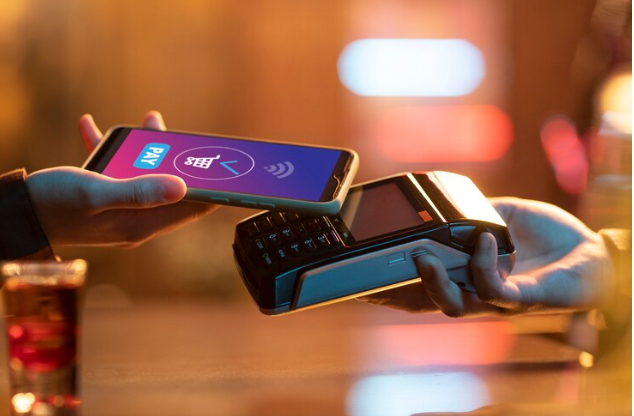

In a world that constantly seeks convenience, contactless payments have emerged as a transformative force in the realm of finance. From tapping a card on a reader to making a payment with a mobile device, the shift towards contactless transactions is reshaping the way we handle money. This blog aims to explore the nuances of contactless payments, examining their evolution, benefits, and the impact they have on our daily lives.
Contactless payments, once considered a futuristic concept, have rapidly evolved to become an integral part of the modern payment landscape. The journey began with contactless cards, equipped with radio-frequency identification (RFID) technology, allowing users to make transactions by simply tapping their cards on compatible readers. This innovation marked the initial step towards reducing the reliance on physical cash and streamlining payment processes.
The rise of mobile technology further propelled the evolution of contactless payments. Mobile wallets, such as Apple Pay, Google Pay, and Samsung Pay, leverage Near Field Communication (NFC) technology to enable users to make secure payments with their smartphones. This convergence of mobile technology and payment systems has revolutionized the way consumers interact with their finances, making transactions more efficient and secure.
Speed and Efficiency:
Contactless payments offer unparalleled speed and efficiency in completing transactions. The swift tap of a card or mobile device significantly reduces the time spent at checkout counters, making the overall payment process seamless and quick. This benefit is particularly evident in bustling environments like public transportation or crowded retail spaces.
Enhanced Security:
Security is a paramount concern in the world of finance, and contactless payments address this with advanced security features. Tokenization, a process where sensitive information is replaced with a unique identifier or token, adds an extra layer of protection. Additionally, biometric authentication methods, such as fingerprint or facial recognition, further enhance the security of contactless transactions.
Hygienic Transactions:
The global health landscape has underscored the importance of hygiene in everyday activities. Contactless payments, by nature, minimize physical contact between individuals and surfaces. This not only aligns with current health considerations but also provides a sense of reassurance to consumers, encouraging the adoption of contactless payment methods.
Convenience and Accessibility:
Contactless payments eliminate the need for physical cash or card insertion, offering unparalleled convenience. The ability to store multiple cards in a digital wallet enhances accessibility, allowing users to choose the most suitable payment method for each transaction. This flexibility caters to diverse consumer preferences and fosters a more user-centric payment experience.
The widespread adoption of contactless payments has not only altered the way transactions occur but has also influenced consumer behavior. The convenience and efficiency associated with contactless payments have led to an increased preference for this mode of transaction, with consumers actively seeking out businesses that support contactless options.
Furthermore, the integration of loyalty programs and rewards into contactless payment platforms has added a layer of gamification, incentivizing users to embrace these technologies. This fusion of payment and rewards systems not only enhances the overall user experience but also cultivates brand loyalty among consumers.
While the benefits of contactless payments are evident, challenges and concerns exist, prompting a nuanced examination of this evolving landscape.
Security Apprehensions:
Despite advanced security measures, some individuals harbor concerns about the safety of contactless transactions. The fear of unauthorized transactions or data breaches can hinder the widespread adoption of contactless payments. Education and awareness initiatives are crucial in addressing these concerns and instilling confidence in users.
Technological Barriers:
The seamless experience of contactless payments relies on the availability and compatibility of technology infrastructure. Areas with limited access to high-speed internet or outdated point-of-sale terminals may face challenges in fully embracing contactless transactions. Bridging these technological gaps is essential for ensuring inclusivity in the adoption of contactless payment methods.
Dependency on Mobile Devices:
While mobile wallets offer convenience, there is a degree of dependency on smartphones for contactless payments. The exclusion of individuals who do not own smartphones or prefer traditional payment methods highlights the importance of maintaining a balance between technological advancements and inclusivity.
As we navigate the ever-changing landscape of finance, the future of contactless payments appears promising and dynamic. Technological advancements, coupled with ongoing efforts to address challenges and concerns, will likely propel contactless transactions into new realms of innovation.
Integration with Emerging Technologies:
The integration of contactless payments with emerging technologies such as blockchain and the Internet of Things (IoT) holds immense potential. These synergies can lead to enhanced security, real-time transaction tracking, and the development of innovative payment solutions that cater to evolving consumer needs.
Global Standardization:
Standardizing contactless payment protocols on a global scale is crucial for fostering interoperability and ensuring a seamless user experience across borders. Efforts towards establishing common standards will facilitate international adoption and contribute to the globalization of contactless payment systems.
Continued Collaboration:
Collaboration between financial institutions, technology companies, and regulatory bodies will play a pivotal role in shaping the future of contactless payments. By fostering an environment of cooperation, stakeholders can collectively address challenges, innovate responsibly, and ensure the sustainable growth of contactless transactions.
Contactless payments have transcended being a mere convenience to become a transformative force in the world of finance. The evolution from contactless cards to mobile wallets reflects a dynamic shift in consumer preferences and the ongoing quest for efficiency, security, and accessibility. As we delve deeper into this realm, it is essential to address challenges, foster inclusivity, and embrace collaborative efforts to navigate the future of contactless payments. Whether it’s tapping a card or using a mobile device, the trajectory of contactless payments is poised to redefine the way we interact with money, shaping a more connected and efficient financial landscape for generations to come.